White wild sunflower is a popular and highly sought-after flower in recent times. However, not everyone fully understands its meaning and how to grow it. In this article, we will provide you with detailed information about white wild sunflowers.
First What is a white wildflower?
 What is a white wildflower?
What is a white wildflower?
Origin and meaning of white wild sunflowers
White wild sunflowers belong to the Asteraceae family and their scientific name is Tithonia diversifolia. These flowers are mainly found in tropical or subtropical countries.
In Vietnam, white wild sunflowers were introduced by the French in Lam Dong, as the environmental conditions in Da Lat are ideal for their growth. They have since been widely planted in many provinces and cities across the country.
Characteristics and classification of white wild sunflowers
White sunflowers are herbaceous plants. The trunk is usually green, but turns gray-brown when it becomes woody. The average height of the flower ranges from 1-3m.
White wild sunflowers resemble chrysanthemums, with smooth leaf blades covered in a thin layer of hair. They have long thin petals and a characteristic white color. These flowers usually grow individually, with 13 petals measuring approximately 8-10cm in diameter.
2 The effects of white wild sunflowers
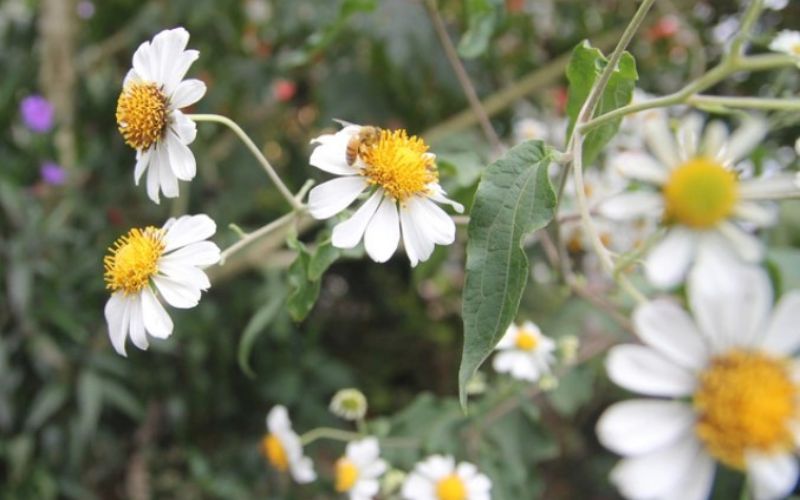 The effects of white wild sunflowers
The effects of white wild sunflowers
In Mexico, the stems and leaves of white wild sunflowers are used to dissolve blood clots, treat rheumatism, sprains, reduce swelling, and relieve pain and fractures.
In Japan, people often use white wild sunflowers to counteract poisoning.
The Chinese consider white wild sunflowers as herbal remedies for liver laxatives, diuretics, and jaundice. They also have the ability to cure fungal diseases and night sweats.
In Vietnam, white wild sunflowers are known for their ability to reduce swelling, treat rashes, atopic dermatitis, as well as their sedative and laxative properties. They are also beneficial for the liver.
3 How to grow and care for white wildflowers
How to grow white wildflowers at home
 How to grow white wildflowers at home
How to grow white wildflowers at home
Planting white wildflowers:
- Soil: Use loose and well-drained soil to prevent waterlogging and root rot. The soil for white wild sunflowers does not need to be nutrient-rich, but adding manure or organic fertilizer can promote green growth and flowering.
- Seeding: Use high-quality seeds and choose a well-lit, dry, and cool location for sowing. Cover the seeds with a thin layer of soil and water them daily to keep the soil moist for optimal growth.
- Cuttings: Cut healthy branches attached to the main stem, remove the leaves at the base, and dip the cuttings in a rooting hormone. Plant them in moist potting soil and they will root within 2-3 weeks.
Caring for white wildflowers:
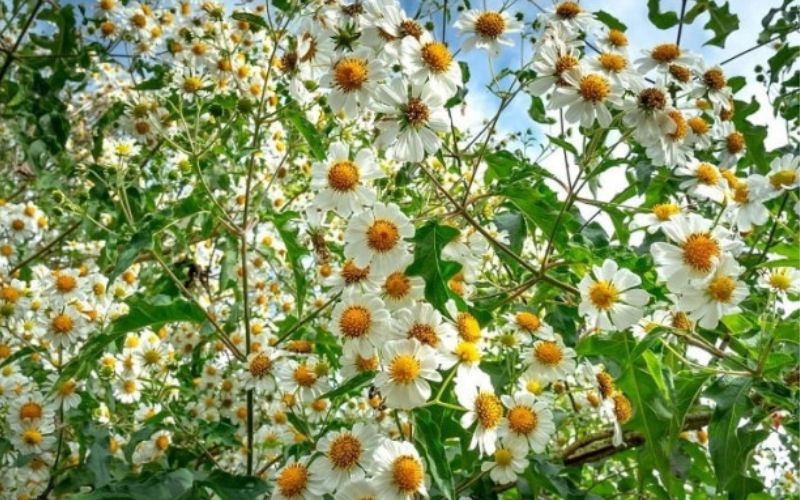 How to care for white wildflowers
How to care for white wildflowers
- Watering: Water regularly, especially during the growing and flowering stages.
- Mulching: Apply straw, straw, or dry leaves around the base of the plant to maintain soil moisture and prevent weed growth.
- Weeding: Regularly remove weeds to ensure the healthy growth of the flowers.
- Pruning: Prune wilted branches, overgrown leaves, and long stems to encourage better flower development.
- Fertilizing: Add organic fertilizer or compost to enrich the soil nutrients, especially during the germination and flowering stages.
4 Notes on planting and caring for white wildflowers
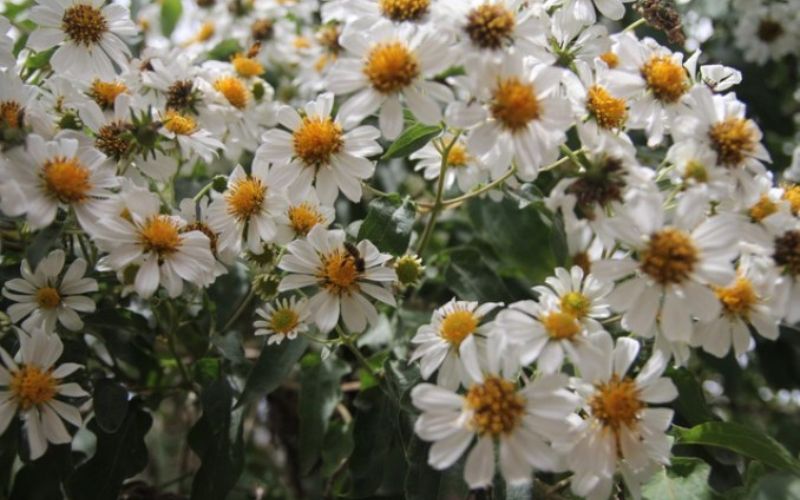 Notes on planting and caring for white wildflowers
Notes on planting and caring for white wildflowers
It is recommended to use NPK fertilizer to periodically nourish the plants 2-3 times a year, especially when they are about to bloom. Avoid over fertilizing, as it can promote leaf growth at the expense of flower production.
5 8 beautiful images of white wild sunflowers
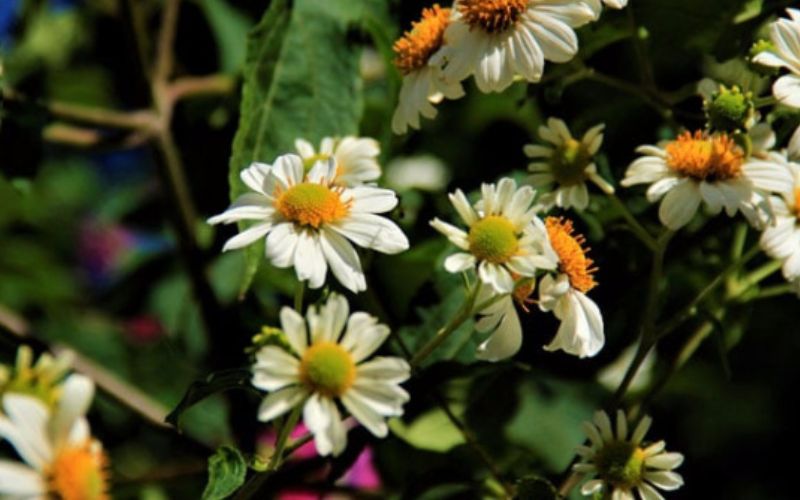 Pictures of white wild sunflowers
Pictures of white wild sunflowers
 Beautiful white wildflowers
Beautiful white wildflowers
 The beauty of white wild sunflowers
The beauty of white wild sunflowers
 White wild sunflowers
White wild sunflowers
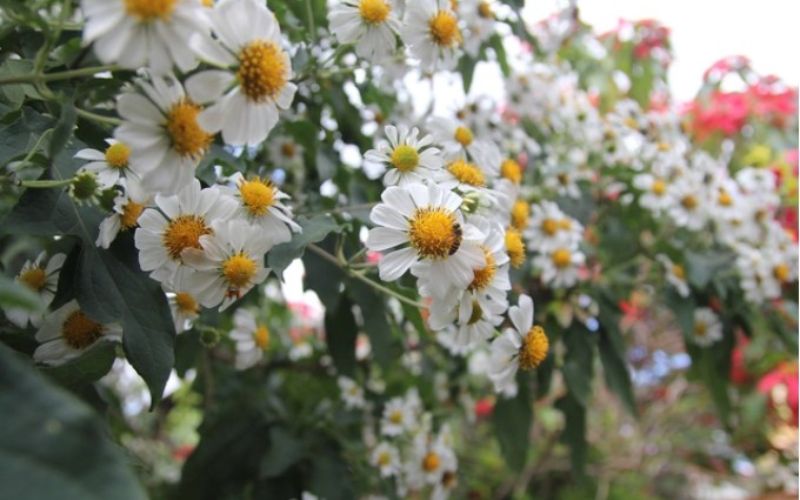 White wild sunflower season
White wild sunflower season
 Unforgettable scent of white wild sunflower
Unforgettable scent of white wild sunflower
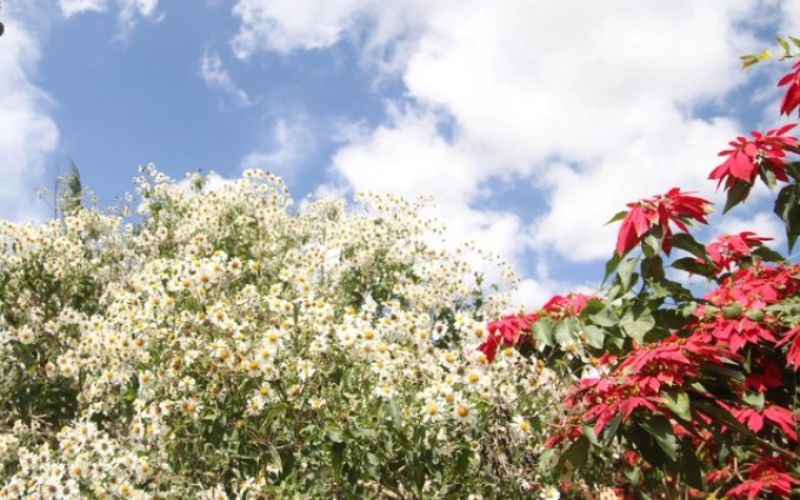 Tourists take pictures with white wild sunflowers
Tourists take pictures with white wild sunflowers
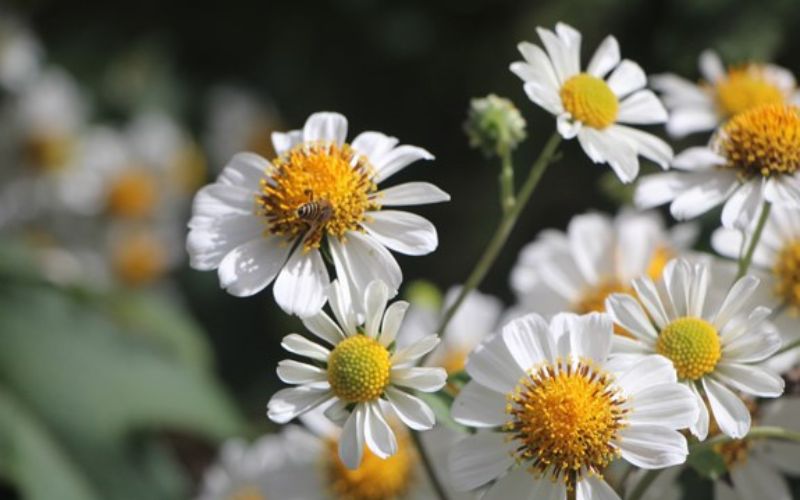 Wild sunflower forest
Wild sunflower forest
Above is basic information about white wild sunflowers. We hope that the information provided by Bach Hoa Xanh has helped you gain a better understanding of the origin, meaning, and cultivation of this flower. Planting white wild sunflowers can add beauty to your living space!

































